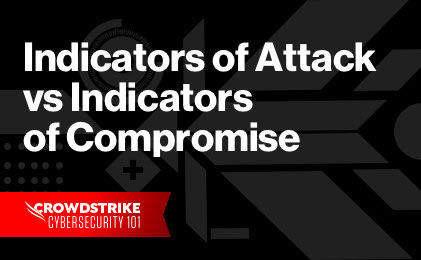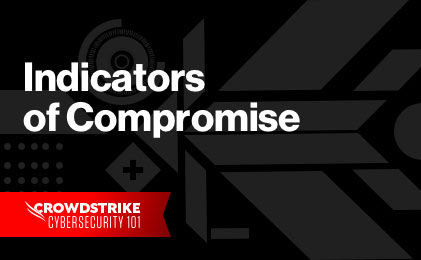What is an IOA (Indicator of Attack)?
In cybersecurity — with new and sophisticated threats emerging every day — early detection and identification of potential security threats is vital. Quickly identifying that an attack is underway can mean the difference between a simple post-incident review and a full-blown security breach with massive sensitive data exposure.
This is where indicators of attack (IOAs) play a crucial role. IOAs are essential tools for early threat identification. For security professionals and teams seeking to protect their digital assets effectively, understanding the role of IOAs is imperative.
In this post, we’ll walk through key concepts of IOAs: their definition, importance, and how they differ from indicators of compromise (IOCs). We’ll also touch on the role of AI in enhancing IOAs. Let’s dive in, starting with the basics.
The basics of IOAs
IOAs are telltale signs or activities that signal a potential cybersecurity threat or attack is in progress. Traditional security measures are often reactive, focusing on the aftermath of an attack. IOAs, on the other hand, are proactive, and they’re a vital part of the early stages of threat detection. They aim to identify and mitigate a threat before it can fully materialize.
Because modern cyber threats are growing increasingly sophisticated, the ability to detect an attack in its infancy is invaluable. Security teams depend on IOAs to protect sensitive data and systems against advanced persistent threats (APTs), zero-day exploits, and other evolving cyber threats.
While IOAs focus on detecting the signs of an attack in progress, IOCs focus on indicators that a security breach has already occurred. IOCs are the evidence of a security incident that investigators gather. They include data such as unusual outbound network traffic, user account anomalies, log events, and changes in file integrity.
IOCs are essential for understanding and mitigating the impact of an attack, but IOAs are key to preventing these breaches in the first place.

2023 Threat Hunting Report
In the 2023 Threat Hunting Report, CrowdStrike’s Counter Adversary Operations team exposes the latest adversary tradecraft and provides knowledge and insights to help stop breaches.
Download NowTypes of IOAs
IOAs can be broadly categorized into several types, each indicating different aspects of a potential cyber threat.
Anomalous network activities
IOAs include unusual patterns in data flow or unexpected external communications that deviate from the norm. For example, a sudden spike in data transferred to an unknown IP address could be a red flag. Network administrators need to be vigilant about such anomalies, as they often precede more overt forms of cyberattacks, such as data breaches or system infiltrations.
Suspicious user behavior
Security teams also need to be on the lookout for activities such as logins at odd hours, repeated attempts to access restricted areas, or an unusual surge in data access requests. These activities might indicate that a user's account has been compromised or that an insider threat exists.
Continuous monitoring of user behavior is essential in identifying these IOAs early. It helps prevent potential insider threats or mitigate the damage caused by compromised user credentials.
System-level indicators
These IOAs include unexpected changes in file integrity, unauthorized modifications to system configurations, or the installation of unknown software. These indicators often suggest that an attacker is attempting to gain a foothold in the system. Early detection of these system-level changes can prevent further exploitation, stopping an attacker in their tracks.
Regular system audits and real-time monitoring are effective strategies for identifying these types of IOAs.
Learn More
An Indicator of Attack (IOA) is related to an IOC in that it is a digital artifact. However, unlike IOCs, IOAs are active in nature and focus on identifying a cyberattack that is in process. Download and learn more!
White Paper: Indicators of Attack vs Indicators of Compromise
How IOAs help in proactive cybersecurity
IOAs play a pivotal role in the early detection of cyber threats. This is crucial in the fast-paced digital world, where every second counts. By identifying IOAs as an attack in progress, organizations can swiftly respond to potential threats, often before any real damage is done. This proactive approach allows organizations to take immediate action against threats rather than deal with the consequences after the fact.
IOAs are also instrumental in strategic response planning. With a clear understanding of the type and severity of an attack, organizations can tailor their response strategies more effectively. This targeted approach not only saves time and resources but enhances the overall security posture.
Finally, IOAs aid an organization in risk assessment and management. By analyzing IOAs, organizations can assess and prioritize risks, ensuring that resources are allocated efficiently to address the most critical threats first. This strategic use of IOAs not only fortifies defenses but streamlines the process of managing cybersecurity risks.
The role of AI in IOAs
The integration of AI into the development of IOAs marks a significant advancement in cybersecurity, leading to AI-powered IOAs. By using sophisticated techniques that analyze vast amounts of data, machine learning (ML) models continuously learn and adapt to new and evolving attack patterns. This enhances the accuracy of IOAs and ensures that the system remains effective in the face of rapidly changing cyber threats.
The benefits of AI-powered IOAs include:
- Faster detection: AI algorithms can process and analyze data at a speed unattainable by human analysts, identifying potential threats faster.
- Automated prevention: With AI, the response to detected threats can be automated, allowing for immediate action to be taken without human intervention.
- Reduction in false positives: AI systems can be trained to more accurately differentiate between normal activities and genuine threats, resulting in a significant reduction in the number of false alarms and ensuring that security teams focus on actual threats.
Conclusion
Understanding and effectively utilizing IOAs is a fundamental aspect of proactive security. In addition to helping organizations detect threats earlier, IOAs help organizations execute strategic response planning and improve risk management. The integration of AI into the development of IOAs further adds to their power and effectiveness.
The CrowdStrike Falcon® platform leverages AI-powered IOAs by training cloud-native ML on telemetry from the CrowdStrike® Security Cloud and combining this data with expertise from CrowdStrike’s network of threat hunting teams. As cyber threats continue to grow in sophistication and number, more and more organizations are turning to the CrowdStrike Falcon platform for AI-native early detection and threat defense to harden their security postures.
To learn more about how the Falcon platform provides cutting-edge technology in cybersecurity threat detection and response, read the CrowdStrike 2024 Global Threat Report or try the platform for free today.





